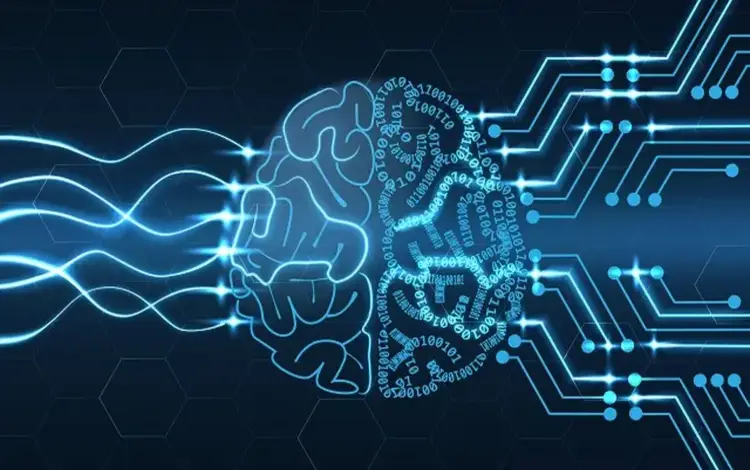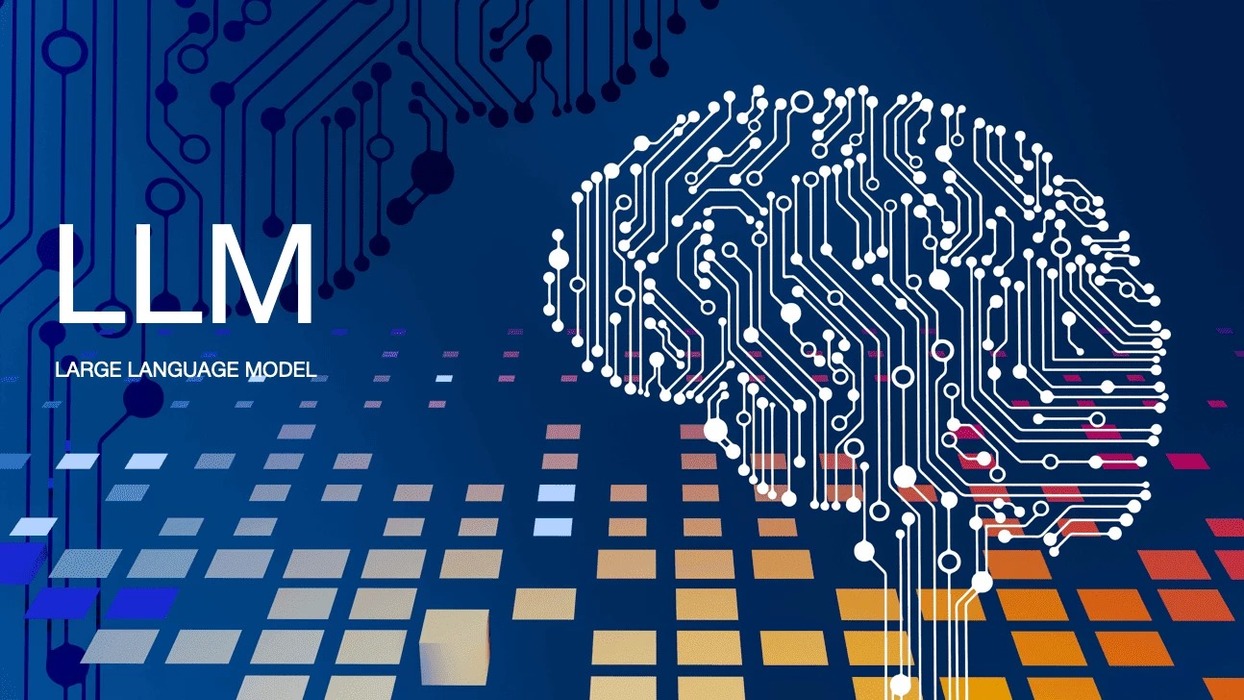Large Language Models (LLMs): a technological revolution at the heart of our daily lives
Since the emergence of ChatGPT at the end of 2022, Large Language Models (LLMs) based on artificial intelligence have garnered increasing interest from both the public and businesses. But what exactly is an LLM? How do they work? What are they used for, and what are their advantages? This article aims to answer these questions in depth.
What is a Large Language Model?
A Large Language Model (LLM) is an advanced form of artificial intelligence designed to understand and generate natural language, mimicking the way humans communicate. These models are built on deep neural networks capable of processing vast textual corpora to learn language in a statistical manner. Specifically, LLMs use deep learning and machine learning techniques to analyze grammatical structures, vocabularies, and varied contexts.
LLMs represent a significant advancement in how machines understand and interact with human language. Their ability to draft text, translate between multiple languages, and engage in complex conversations makes them particularly valuable across many application areas.
How do LLMs work?
LLMs operate through a machine learning method based on exposure to large quantities of textual data. This process involves several key stages:
Pre-training: During this initial phase, LLMs are exposed to a vast dataset of texts, including books, articles, and speeches. The goal is to learn basic linguistic tasks and functions. The models detect recurring patterns in language, understanding which word combinations are frequent, how words come together to form sentences, and how meaning shifts with context.
Fine-tuning: Once the model is pre-trained, it can be refined with specific data to improve its performance in particular use cases, which is called fine-tuning. This phase requires less data and energy than pre-training but is crucial for adapting the model to specific applications like machine translation or question-answering services.
Usage: After fine-tuning, LLMs are capable of generating text that seems natural and coherent. For instance, after reading thousands of books, an LLM might understand that the word “cat” is often associated with words like “meow,” “fur,” and “play.” This ability to predict which words are likely to follow in a sentence allows LLMs to generate text that appears natural and fluid.

What are LLMs used for?
LLMs have numerous and varied applications, ranging from machine translation to text generation, chatbots, and virtual assistants. Here are some examples of how LLMs are used in different fields:
- Machine Translation: LLMs enable the conversion of text from one language to another with high accuracy. They can understand the context and nuances of the source language to produce a faithful and smooth translation.
- Question-Answering Services: LLMs can provide relevant answers to questions posed in natural language. They are capable of understanding the context of the question and formulating an appropriate response, making interactions more natural and intuitive.
- Text Generation: LLMs can produce blog posts, video game scripts, reports, and much more. Their ability to generate textual content in seconds makes them valuable tools for content creators and businesses.
- Chatbots and Virtual Assistants: Used for customer service, LLMs can engage in natural and intuitive conversations with users. They can understand customer requests, provide precise answers, and personalize interactions based on user preferences.
- Sentiment Analysis: LLMs can analyze customer feedback to help guide strategic decisions for businesses. They can detect positive, negative, or neutral sentiments expressed in reviews and comments, providing valuable insights to improve products and services.
- Information Extraction: LLMs can identify and extract specific information from large textual databases. This capability is particularly useful for data scraping and analyzing large amounts of information.
- Creative Content Generation: LLMs can also be used to generate creative content, such as poems, short stories, and even movie scripts. Their ability to understand and imitate various literary styles and tones makes them powerful tools for writers and artists.
Benefits of LLMs for businesses
For organizations, LLMs represent a real boon. Here are some notable advantages:
- Process Automation: LLMs can automate time-consuming tasks such as customer service, text generation, and data classification. This allows employees to focus on more valuable activities that require genuine human expertise. For instance, an LLM can analyze thousands of customer reviews to gauge overall sentiment and identify areas for improvement, freeing customer support teams to focus on more complex tasks.
- Customer Service Personalization: Through chatbots and virtual assistants, LLMs can provide 24/7 customer service by personalizing interactions based on analyzed data. For example, a chatbot using an LLM can recognize customer preferences and behaviors to offer tailored recommendations and responses.
- Task Precision: By processing large amounts of data, LLMs enhance the accuracy of prediction and classification tasks. For instance, after a satisfaction survey, an LLM can analyze thousands of customer reviews to understand the underlying sentiment behind each one, identifying with greater precision whether a review is positive, negative, or neutral.
Limitations and challenges of LLMs
Despite their numerous advantages, LLMs also present challenges and limitations that must be considered:
- Data Bias: Language models are limited to the textual data they are trained on, which can result in biased or incorrect information. For example, if an LLM is trained on data containing biases or stereotypes, it may reproduce these biases in its responses and predictions.
- Limited Context Window: Each LLM has a limited memory capacity, beyond which it cannot perform requested tasks. This means they may struggle with very long or complex contexts, potentially limiting their utility in certain applications.
- Costs and Environmental Impact: Developing and operating LLMs require substantial investments in computing and energy resources. LLM projects use hundreds of servers, consuming a huge amount of energy and contributing to a significant carbon footprint. The costs associated with implementing and maintaining LLMs can also be prohibitive for some companies.

Training and skills required to work with LLMs
Working with LLMs requires extensive training and specific skills in data science, artificial intelligence, and machine learning. Here is an overview of the skills and training needed to become an LLM expert:
- Data Scientist: A Data Scientist is an expert in data analysis capable of solving complex problems through curiosity and technical skills. Their role is to uncover the true value of data by defining the most relevant analysis algorithms to meet various needs and developing descriptive and predictive models.
- Machine Learning Engineer: The Machine Learning Engineer differs from the Data Scientist. While both may develop machine learning and deep learning algorithms, the Data Scientist does not always have the knowledge and tools to deploy a static model in production. The Machine Learning Engineer addresses this gap by dynamically utilizing established models.
The future of LLMs
LLMs represent an evolving technology, and their potential to transform our interaction with technology is immense. As machine learning and deep learning techniques continue to advance, LLMs will become even more sophisticated and capable of performing increasingly complex tasks.
One of the most promising areas of research is improving LLMs’ ability to understand and generate longer and more complex contexts. This will enable LLMs to handle richer and more nuanced conversations, enhancing their utility in applications such as chatbots, virtual assistants, and question-answering systems.
Moreover, efforts to reduce the carbon footprint of LLMs are ongoing. Researchers are exploring ways to optimize the energy efficiency of models and reduce their computing resource consumption. This includes using more efficient learning techniques and optimizing the computing infrastructure used to train and deploy models.
Finally, LLMs will play a key role in developing new AI-based applications and services. For example, LLMs can be used to develop more intelligent recommendation systems, automated content creation tools, and advanced data analysis solutions. Their ability to understand and generate natural language will open new possibilities for businesses and consumers, transforming how we interact with technology and the digital world.
Data security and sovereignty
Technological advancements and optimizations in architecture have led to creating models that, while powerful, are compact enough to run on local machines. Thus, organizations can process sensitive data without sending it to external servers, reducing the risk of exposing personal or sensitive data to third parties and better controlling data sovereignty, similar to the Mixtral 8x7b or Llama 3 8b models (8B = 8 billion parameters).
Conclusion
LLMs represent a major breakthrough in the understanding and generation of natural language by machines. These large language models are not just cutting-edge technology but a true transformation of our interaction with the digital world. They promise a future where machines understand and respond to our needs with unprecedented precision and fluidity. Continued improvements in data security and performance enable companies using these models to increase their productivity by automating complex tasks, improving operational efficiency, and providing personalized and intuitive customer experiences.




